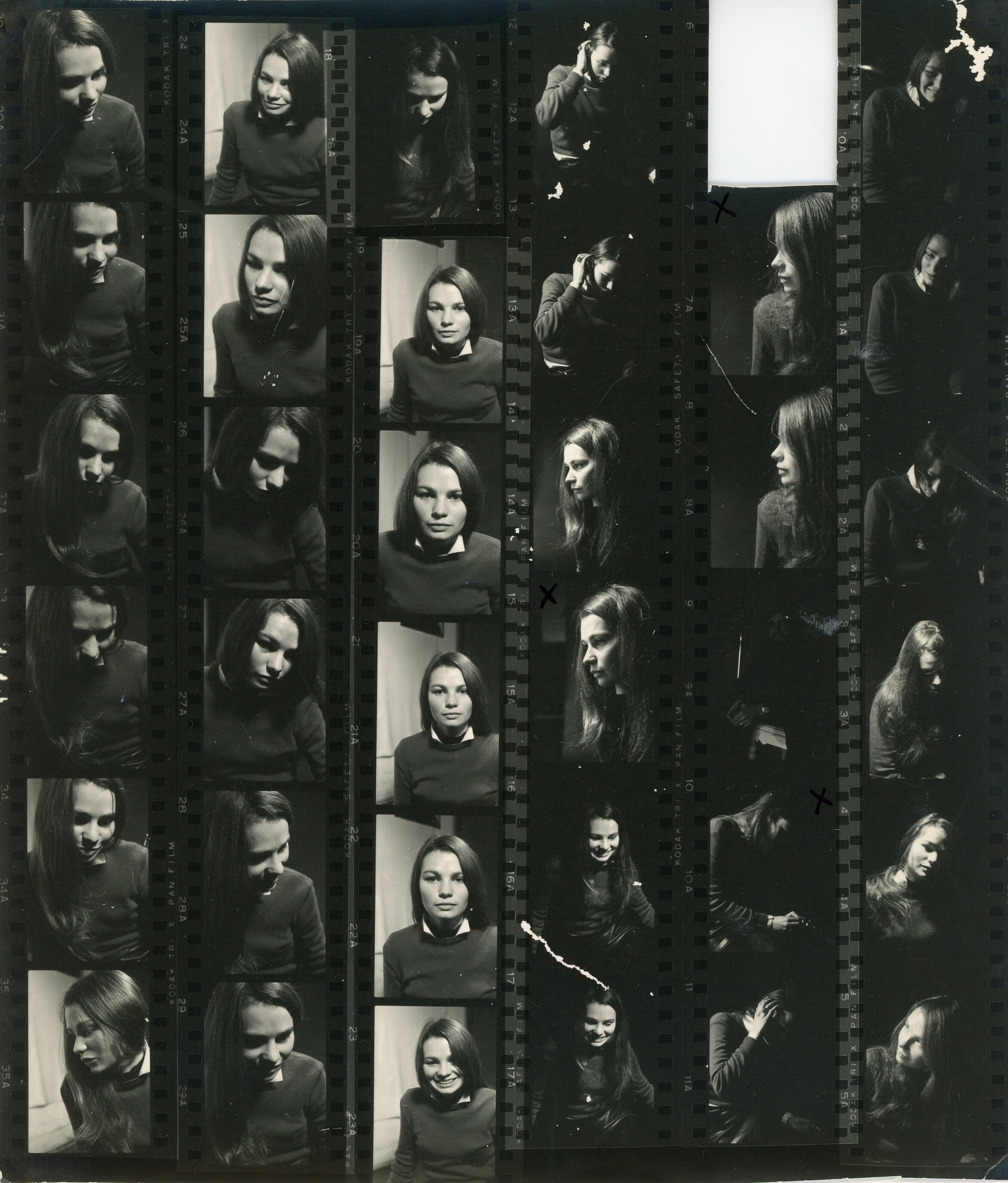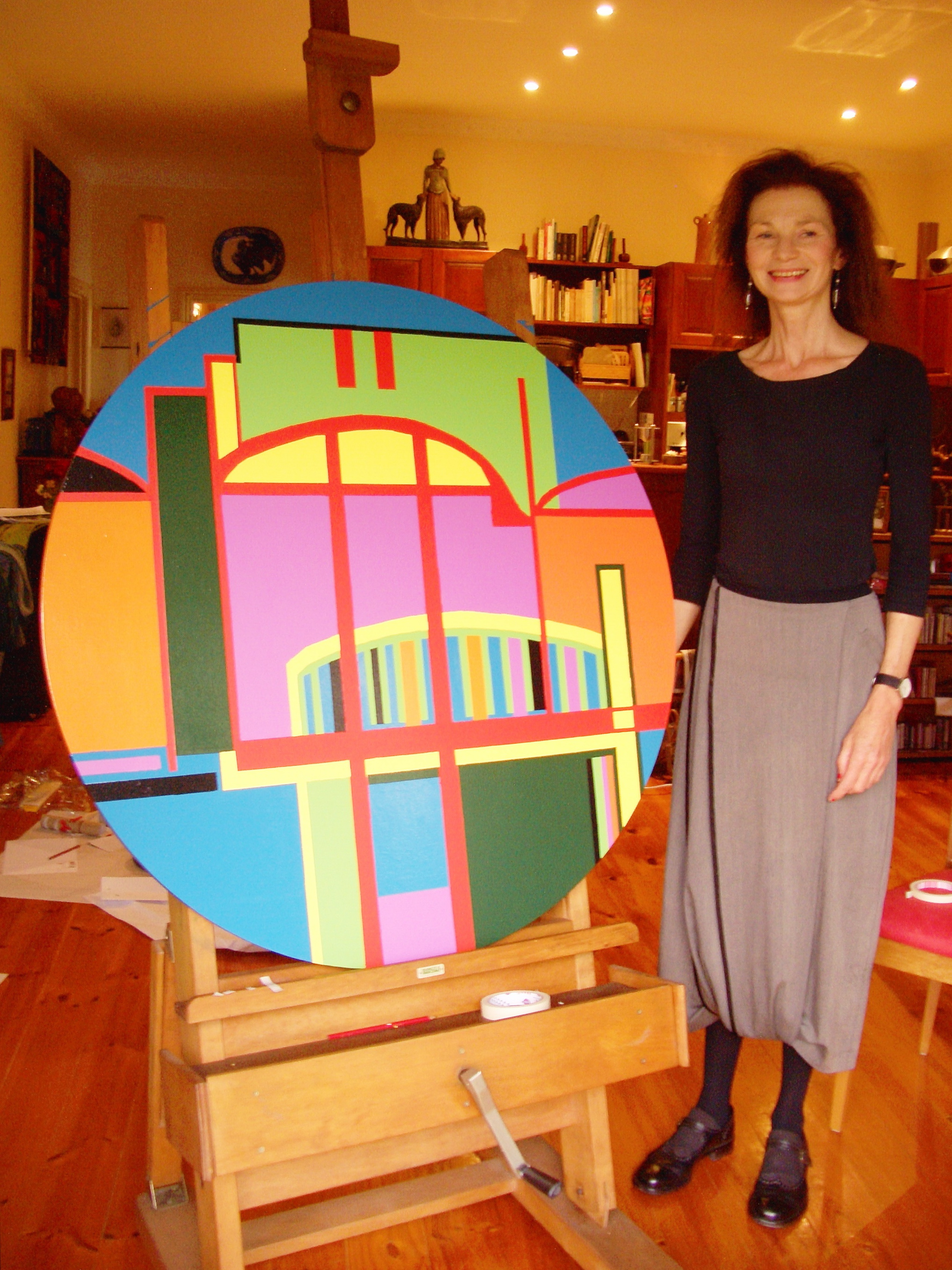up close and unseen: impressions of carol jerrems as a student photographer

Carol Jerrems, untitled, 1968
© Diana
‘I found her a woman of few words, not very friendly, a bit pouty, almost defiant.’ These are the initial impressions Diana had of the student-photographer who approached her at a gig at the Melbourne University’s student union. The photographer was Carol Jerrems and the year was 1968. Little did either young woman know that the photo shoot would contribute to establishing two successful careers: one behind the camera; the other in front of it. I recently met Diana for coffee near her Melbourne home and discussed her association with Jerrems. She brought with her the A4-sized enveloped addresses in Jerrems’ hand which still contained the photographs taken all those years ago.
It seems timely that Diana and I should meet while the major retrospective exhibition, Carol Jerrems: Photographic Artist, is currently showing at the National Gallery of Australia, Canberra. Celebrated for her visceral, up-close, black and white style of photographic portraiture, Jerrems is considered one of Australia’s greatest ever photographers. When Diana met her, the emerging photographer was a student at Melbourne’s Prahran Technical College. Her tragically short career that saw her produce photographs that have come to define Australian life in the 1970s lay before her.

© Diana
The photos of Diana are characteristic of Jerrems’ early work. The phase of her career spanning her student years, 1967-1970, is documentary in style: low-key photographic portraits that captured Jerrems’ experience of being a teenager in the late 1960s. Born in 1949 to working-class parents in the Melbourne suburb of Ivanhoe, Jerrems selected ‘real people’ for her subjects, including young university students like Diana. Many of the projects she completed during her student years combined word and image. These early works, which are featured in the NGA’s exhibition, reveal the complex working of her inner mind. The images of Diana were likely to have been included in one of the large scrapbooks Jerrems created during this period, in which she also wrote thoughts and observations alongside photographs. At the time of the shoot, Jerrems told Diana she intended to use the photographs in a specific project, but it is unknown whether she completed the project.
Jerrems’ photographs of Diana may never have been exhibited, but they did have a life after the shoot. As a twenty-four year old, Diana moved to Paris. She turned to modelling as a means of earning a living; the photos helped her secure work. Modelling for the couture label Lanvin, Diana’s life seemed a world away from that of Jerrems, who was pursuing her career in Australia. She became a teacher in Melbourne and later Tasmania as a way of subsidising her photographic practice.

Carol Jerrems, untitled, 1968
© Diana
Despite her defiant manner, Jerrems was considerate with her subjects. Always asking permission before capturing their images, Jerrems would arrange to meet her subjects later on location or, as with Diana, in a photographic studio. Finding her incredibly intense about her work, Diana saw Jerrems as anti-conformist, someone who ‘lived according to what she believed in and had little tolerance for those whom she suspected didn’t conform to her ideals’. Her idealistic, hard and fast lifestyle is reflected in the themes and subjects of her mature work, ranging from Redfern’s Aboriginal community, rebellious youths involved in criminal gangs, to portraits of her lovers. Her iconic photographic Vale Street (1975) was one of the numerous works she produced during this time. Depicting a topless young woman defiantly staring out at the viewer and surrounded by two troubled young men, this image has become an iconic expression of Australia in the 1970s. The raw images of her physical decline as she succumbed to a rare blood disease rounded off her confronting approach to photography.
Having spent time with Diana, it is understandable why Jerrems was drawn to her all those years ago. A warm, highly-intelligent, creative and strikingly beautiful person (both inside and out), Diana is not the kind of person you forget; nor do you want to. An artist in her own right, she continues to explore her love of art making, music and poetry (one of her poems was selected by Quadrant editor Les Murray for publication in the May 2011 issue). It was clear from our conversation that art is more than a passing interest for Diana: it is her greatest passion. Perhaps this explains why she was so willing to model for Jerrems as a nineteen year-old, as it gave her first-hand access to the working processes of a photographer. Reflecting her life-long passion for art, it was during a visit to a retrospective exhibition of Jerrems’ work at the Australian Embassy in Paris in 1980 that Diana learned of the photographer’s tragic death earlier that year.


